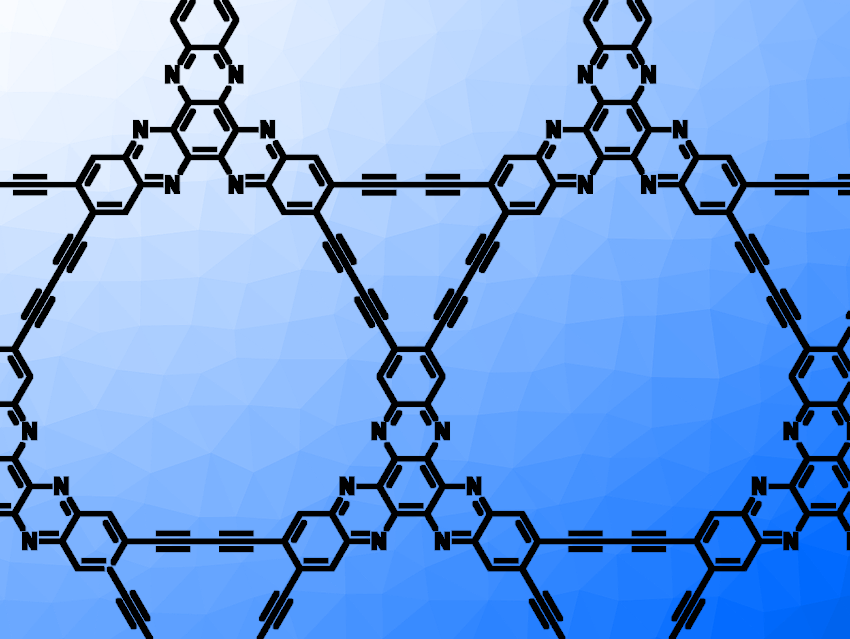Lithium-ion batteries (LIBs) are widely used, e.g., in portable electronics and electric cars. The development of new electrode materials for LIBs is important for improving the properties of these batteries. Carbon-based materials can be promising due to low costs and good electrical conductivity. However, it can be challenging to fine-tune their structure to optimize properties. Graphdiyne (GDY) is a two-dimensional carbon allotrope in which benzene rings are connected via two sequential acetylene units. It has a high theoretical capacity for use in LIBs and can be doped to change its properties.
Hui Liu, Yingjie Zhao, Qingdao University of Science and Technology, China, and colleagues have synthesized a nitrogen-rich graphdiyne (HATN-GDY, pictured) that contains hexaazatrinaphthylene (HATN) units in place of benzene rings and can be used in LIB anodes. The team prepared HATN-GDY via a bottom-up approach involving a hexaethinyl-functionalized HATN precursor on a copper surface that serves as both catalyst and template.
The resulting 2D material has a fully π-conjugated system and large cavities. It showed a high specific capacity of 2,139 mA h g–1 and good long-term stability when used as a LIB anode material. According to the researchers, these properties could make HATN-GDY a potential electrode material for high-energy-density LIBs.
- A nitrogen-rich graphdiyne containing hexaazatrinaphthylene for high-performance lithium-ion batteries,
Jiaheng Hou, Danbo Wang, Menghuan Chao, Lin Zhang, Hui Liu, Yingjie Zhao,
Chem. Commun. 2024.
https://doi.org/10.1039/D3CC05722D



